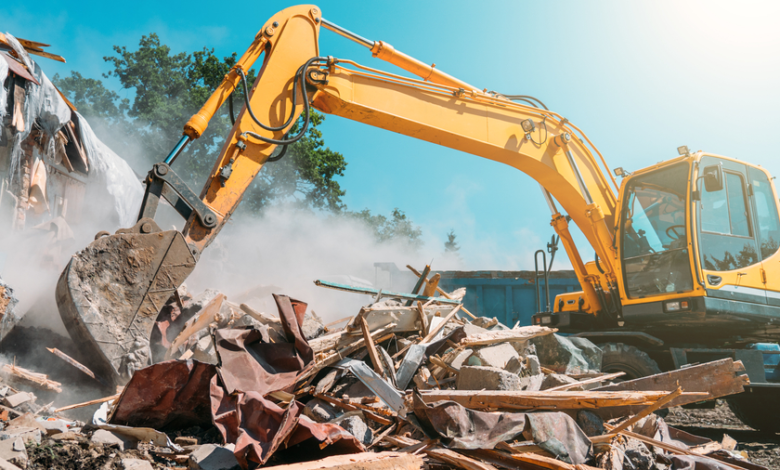Construction Debris Disposal Best Practices for Efficient Site Management

Construction debris disposal is a critical part of any building, renovation, or demolition project. Proper management involves collecting, transporting, and disposing of waste materials like wood, concrete, metal, and drywall in a way that meets local regulations and reduces environmental impact. Effective construction debris disposal helps keep job sites safe, minimizes landfill waste, and supports sustainable building practices.
Debris disposal options include drop-off facilities, dumpster rentals, and professional removal services. Many cities operate dedicated recycling centers for construction waste, often charging a fee for specific items like bulky furniture or renovation materials. Knowing the right disposal methods can save time, reduce costs, and ensure compliance with legal requirements.
As construction debris continues to grow as a significant waste source, understanding how to handle it responsibly becomes essential. Proper disposal not only addresses safety and regulatory needs but also promotes recycling and the reuse of valuable materials.
Construction Debris Disposal Methods
Construction debris disposal involves a range of approaches depending on the type of material, site constraints, and environmental regulations. Different strategies focus on minimizing waste sent to landfills, maximizing material reuse, and controlling debris directly at the construction site.
Landfill Disposal Options
Landfilling remains a common disposal method but is increasingly regulated due to its environmental impact. It involves transporting construction waste to designated landfill sites that can handle mixed debris safely.
Projects must separate hazardous materials from non-hazardous waste before landfill disposal. Proper sorting helps avoid contamination and complies with legal requirements.
Landfill fees can vary based on waste type and volume. Some regions require documentation proving disposal at licensed facilities to ensure compliance with local ordinances.
Recycling Construction Waste
Recycling construction waste reduces landfill use and recovers valuable materials like metals, wood, drywall, and concrete. These materials are processed and remanufactured into new products.
Common recyclable items include lumber, metals, masonry, plastic, and cardboard. Diverting these from landfills conserves natural resources and can lower disposal costs.
Recycling requires coordination with certified processing centers. Using these facilities ensures materials are handled appropriately and meet city or state recycling ordinances.
See also: How KYC Services Help Businesses Prevent Fraud and Build Customer Trust
On-Site Debris Management
On-site debris management involves strategies to minimize waste generation and handle materials efficiently within the project area. Techniques include using construction dumpsters and prefabrication.
Prefabrication reduces on-site waste by producing components off-site with precise measurements, cutting down excess material. It also accelerates project timelines.
Workers trained in waste separation and handling improve debris management. Proper sorting on-site facilitates recycling and disposal, making the process cost-effective and environmentally responsible.
Best Practices for Safe and Legal Debris Disposal
Effective debris disposal requires careful material management, strict adherence to legal requirements, and the use of qualified professionals. These elements help protect the environment, maintain site safety, and avoid regulatory penalties.
Sorting and Segregating Materials
Proper sorting of construction debris improves recycling potential and reduces the volume sent to landfills. Materials such as wood, concrete, metal, and hazardous waste must be separated at the source.
Clear labeling and designated collection areas on-site minimize cross-contamination. For example, metals should be collected separately for recycling, while hazardous materials require special containment and handling protocols.
This practice prevents environmental contamination, improves disposal efficiency, and can lower costs by maximizing material reuse and reducing fees associated with mixed waste.
Compliance With Local Regulations
Adhering to local debris disposal regulations is critical to avoid fines and legal issues. Regulations often specify allowable materials, handling methods, and required permits for disposal sites.
Project managers must research jurisdiction-specific rules before disposal activities begin. This includes understanding restrictions on hazardous waste, requirements for documentation, and transportation guidelines.
Failure to comply can lead to penalties, project delays, and environmental damage. Maintaining thorough records and regularly training staff on compliance protocols are essential steps.
Contracting Licensed Disposal Services
Using licensed waste disposal services increases compliance and ensures environmentally responsible handling of debris. Licensed providers understand legal frameworks and have access to approved disposal or recycling facilities.
These experts provide proper transport, treatment, and disposal of all waste types, including hazardous materials. They also handle necessary documentation and permits.
Contracting professionals reduces liability and streamlines debris management. It allows construction teams to focus on core tasks while ensuring safe, legal removal of waste.





